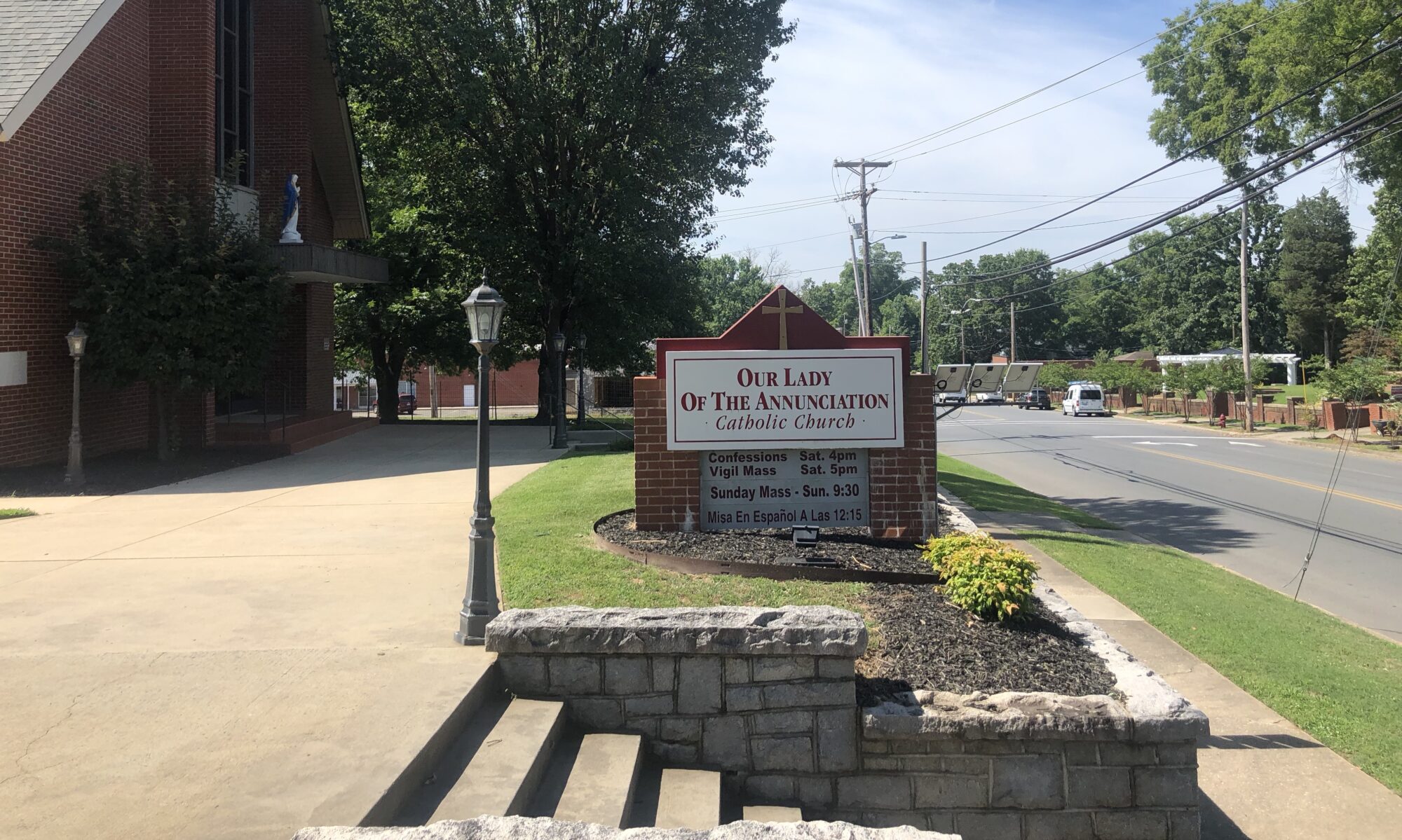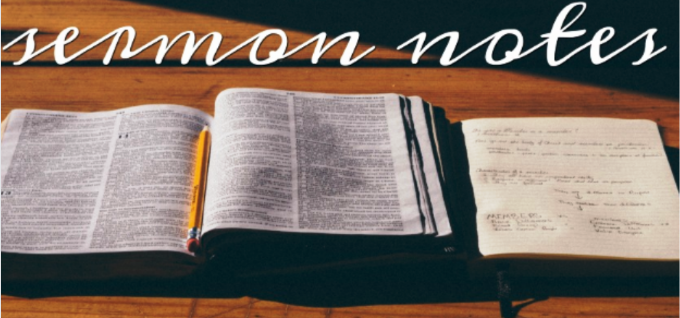
//Sonflowers – Facebook – 4/27/2024//

416 N 2nd St, Albemarle, NC, 28001 | (704) 982-2910

//Sonflowers – Facebook – 4/27/2024//

“There is Only One Truth”
Father Peter Fitzgibbons
April 13 – 14, 2024
Gospel: Luke 24:35-48
35 Then they told their story of what had happened on the road and how they had recognised Him at the breaking of bread. 36 They were still talking about all this when He himself stood among them and said to them, ‘Peace be with you!’ 37 In a state of alarm and fright, they thought they were seeing a ghost. 38 But He said, ‘Why are you so agitated, and why are these doubts stirring in your hearts? 39 See by My hands and My feet that it is I Myself. Touch Me and see for yourselves; a ghost has no flesh and bones as you can see I have.’ 40 And as He said this He showed them His hands and his feet. 41 Their joy was so great that they still could not believe it, as they were dumbfounded; so He said to them, ‘Have you anything here to eat?’ 42 And they offered Him a piece of grilled fish, 43 which He took and ate before their eyes. 44 Then He told them, ‘This is what I meant when I said, while I was still with you, that everything written about Me in the Law of Moses, in the Prophets and in the Psalms, was destined to be fulfilled.’ 45 He then opened their minds to understand the scriptures, 46 and He said to them, ‘So it is written that the Christ would suffer and on the third day rise from the dead, 47 and that, in His name, repentance for the forgiveness of sins would be preached to all nations, beginning from Jerusalem. 48 You are witnesses to this.
I looked this up: there are over 12,000 Protestant denominations. Protestants say they believe in Scripture; however, they must be reading different books than Catholics. God wants us to find our truth. Philosophically, there can be only one truth. There is one God and one truth. There is no different faith for Yankees than there is for people in Aquadale. There is not a different faith for people with different skin tones. We have only one faith and one truth. The Catholic Church teaches the truth.
I get these questions all the time. I see a group of Baptist guys on Mondays at Parkway House. They are good old boys, and I always go up and talk to them. Some of them will start quoting Scripture and ask if I am familiar with it. I feel like saying, “Dude, see this collar? I went to school and, believe it or not, I earned a master’s degree. I really did study, and I have a diploma to prove it.” So yeah, I think I know Scripture. I have people coming up to me all the time trying to prove me wrong. The Catholic Church wrote the Bible, so I know what it says and what it means. “Well, I don’t think it means that.” Do you argue with your doctor too? There is one truth. The Church teaches the truth, and we call that tradition. Truth is also contained outside of Scripture. In John’s gospel, he admitted that Scripture does not contain everything (John 21:25). So, we have the whole truth that the Church has taught from the beginning.
We have all sorts of people who have been “gifted” by the spirit, and they claim, “truth to power.” Uh-Huh. When someone uses that phrase, I always say, “I’ll get someone to check your meds because it sounds like you are on a real ego trip.” In the Catholic Church, those people have fallen by the wayside. They’ve all gone bye-bye. They say, “We have a new and better way. Christ told us so.” How’s that working out for you? Probably not really well. If we stick to what Christ said, we get what He promised: peace and joy in our souls, all the happiness that is possible in this life, and eternal life in the next. We have an inkling of what Heaven is like.
A lot of people say, “I don’t care what happens to my body; the body isn’t important.” Yes, it is. Our Lord said, “See by My hands and My feet that it is I Myself. Touch Me and see for yourselves.” At the end of time, we will have our bodies back . . . our souls will be reunited with our bodies. Nothing imperfect can be in the presence of God. There is only a temporary separation of our soul and body, so at the end of the world, we will receive our bodies back to serve our Lord and love Him. We will be reunited with our bodies and rejoice in Heaven. Hopefully, I won’t be eating fish! Please, Lord!! Although I am sure He will make me like it. This is our future. We will have our bodies back and not the weak and frail ones we have now, but bodies made perfect. We will be able to recognize each other in Heaven because the Apostles recognized our good Lord. If we do as we are told, that is our future. If not, let me know how that works out for you.
How will you apply this message to your life? _________________________________________
You can read all of Father Fitzgibbons’ sermons by going to AnnunciationCatholicAlbemarle.com, clicking on “Blog” then “Categories” and then “Sermon Notes.” On a cell phone: click on “Blog” and then “Menu.” Scroll to the bottom and click on “Categories.” Sermon Notes are also available on the Church’s Facebook page at OLA.Catholic.Church. Click on “Groups” and then “Sermon Notes.”

Too Busy Doing What?
Physically—we don’t exercise regularly because we’re too busy. We don’t eat the right types of food, because they take too long to prepare, it’s too easy to go through the drive- through, and we’re too busy.
We don’t sleep regularly, because there are still only twenty-four hours in a day. We feel as though our lives have a momentum of their own, that they would go on with or without us. Our list of the things we have to do just gets longer and longer. We never feel that we get caught up; we just get more and more behind every day. Seriously, when was the last time you sat down, took a deep breath, and said to yourself, “I’m caught up now!” So we rush around late at night doing fifty- five little things before we go to bed and robbing ourselves of the precious sleep that rebuilds and rejuvenates us. Why? We are too busy.
Emotionally—most of us know that the happiest people on the planet are those who are focused in their personal relationships. Relationships thrive under one condition: carefree timelessness. Do we gift our relationships with carefree timelessness? Of course we don’t. We shove them into ten minutes here and fifteen minutes there. We give them the worst time, when we are most tired and least emotionally available. Why? We are too busy.
Intellectually—we don’t even take those ten or fifteen minutes each day to read good books that challenge us to change, to grow, and to become the- best- version- of-ourselves. Why? We don’t have time. We are too busy.
Spiritually—most people very rarely step into the classroom of silence to reconnect with themselves and their God. Why? We are afraid of what we might discover about ourselves and about our lives. We are afraid we might be challenged to change. And we are too busy.
It begs the question, doesn’t it? What are we all too busy doing? For the most part, we are too busy doing just about everything, that means just about nothing, to just about nobody, just about anywhere . . . and will mean even less to anyone a hundred years from now!
Matthew Kelly
From The Rhythm of Life
Click Here To Get Your Copy!


//Hope Faith & Kindness – Facebook – 4/23/2024//

//Lord I Trust You – Facebook – 4/23/2024//

The Call to Christian Discipleship
Our love and suffering as Christian disciples, like the Lord’s on the cross, does not happen in vain. As the Franciscan scholar Zachary Hayes stated so clearly, “We become like what we love,” and that transformation recasts the categories of our ordinary experience into something else, something greater, something more than what we had originally expected. This is not to deny the real pain, loss, and trauma that can accompany suffering, but it does suggest that the meaning of human experience is deeper and more significant than we think.
Like Francis of Assisi, we too can be transformed by the power of love and embrace the call to Christian discipleship with passion. The task at hand is to see that the Word continues to call us to move beyond ourselves, to enter into an evermore intimate relationship with God, to make God’s story our story, to work for justice and peace in our world, and to embrace the love and suffering that comes with following Christ.
—from the book The Last Words of Jesus: A Meditation on Love and Suffering
by Daniel P. Horan, OFM
Franciscan Media: https://www.franciscanmedia.org/

Wield Your Words Well
When it comes to how we communicate with others—especially in this an election year—let’s turn to the Gospel of Matthew who gives us a strong warning: “On the day of judgment people will render an account for every careless word they speak. By your words you will be acquitted, and by your words you will be condemned” (12:36-37). Especially in today’s fractious times, using the Bible’s rich advice can improve our interactions and soothe our wearied souls. God’s words should heal us.
When our words are kind and gentle, our spirits will be too. We will have fewer regrets and be more charitable and peaceful. Today, let’s wield our words well, confident in the guidance of God’s word.
—from St. Anthony Messenger‘s “Five Steps toward Better Communication“
by Colleen Arnold, MD
Franciscan Media: https://www.franciscanmedia.org/